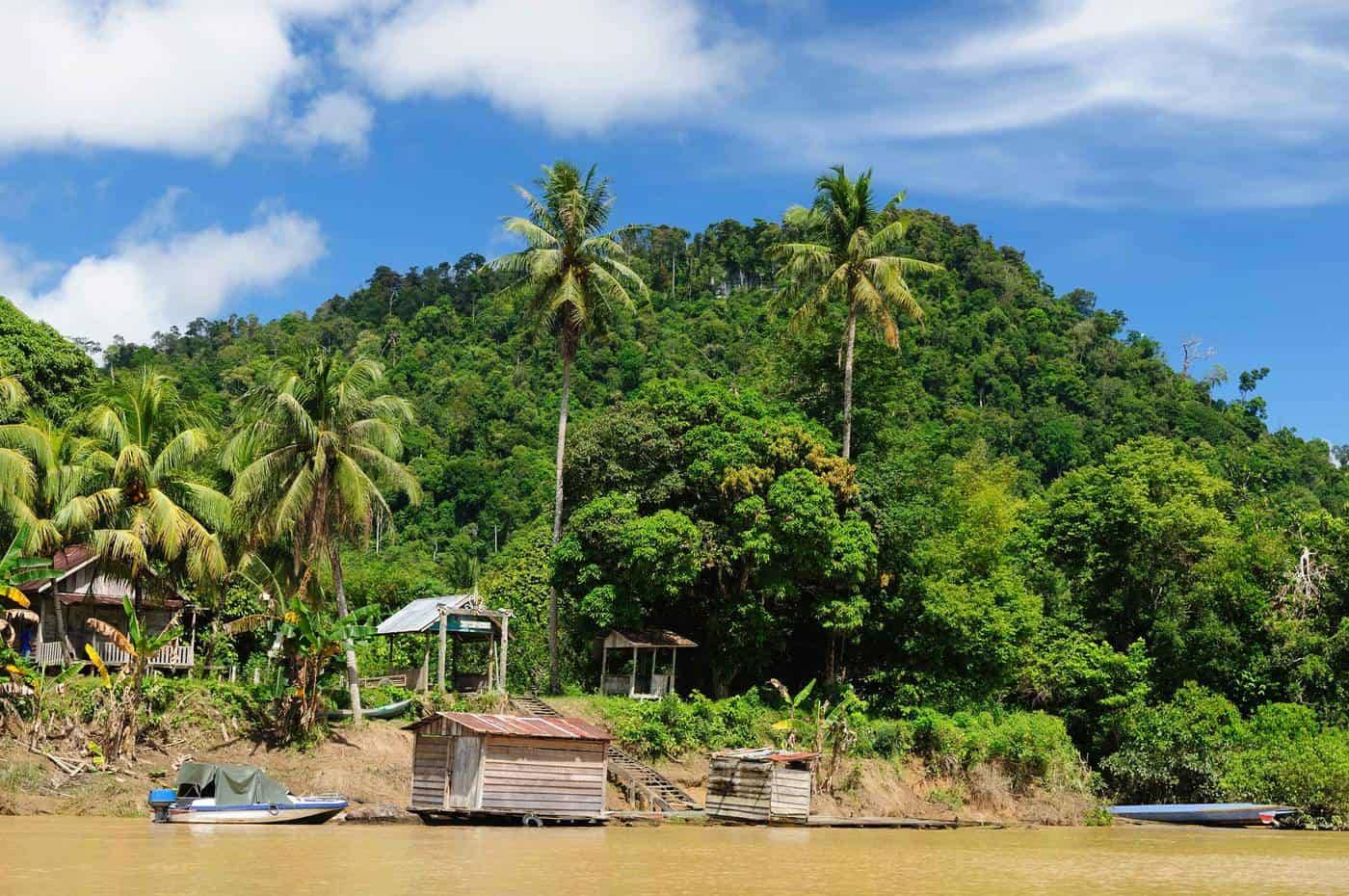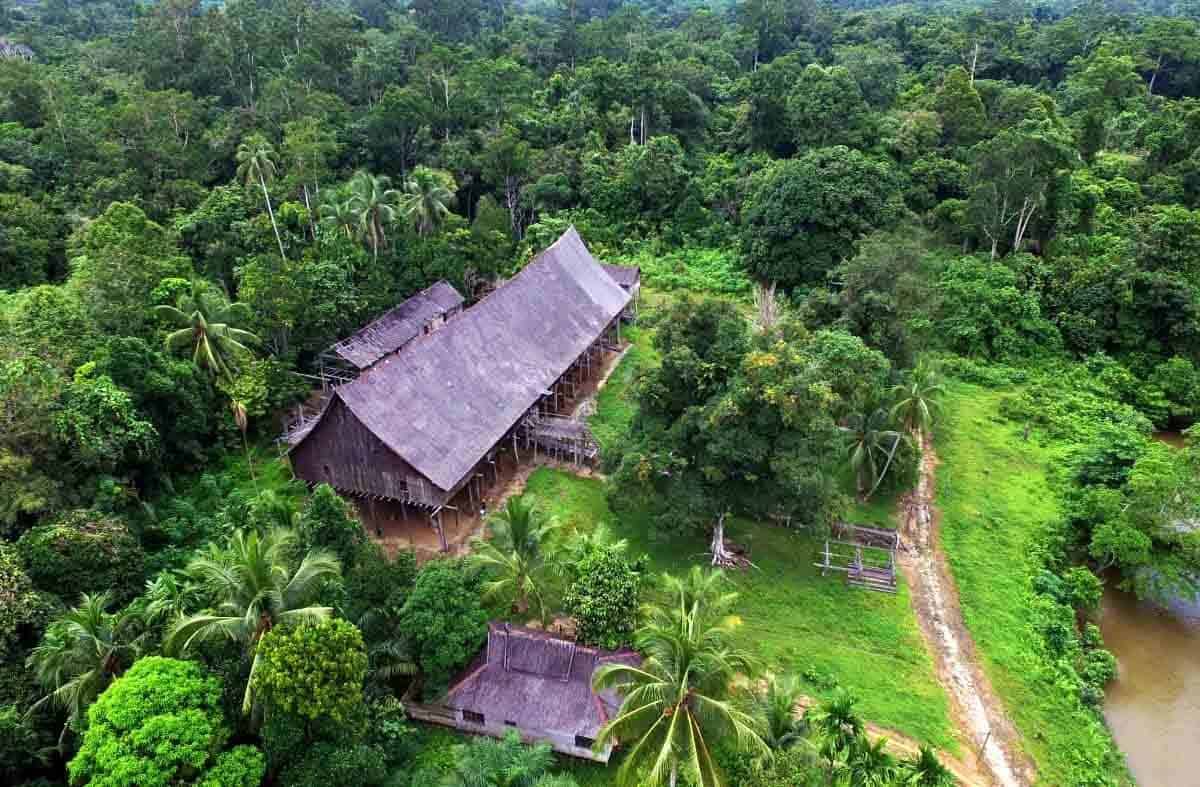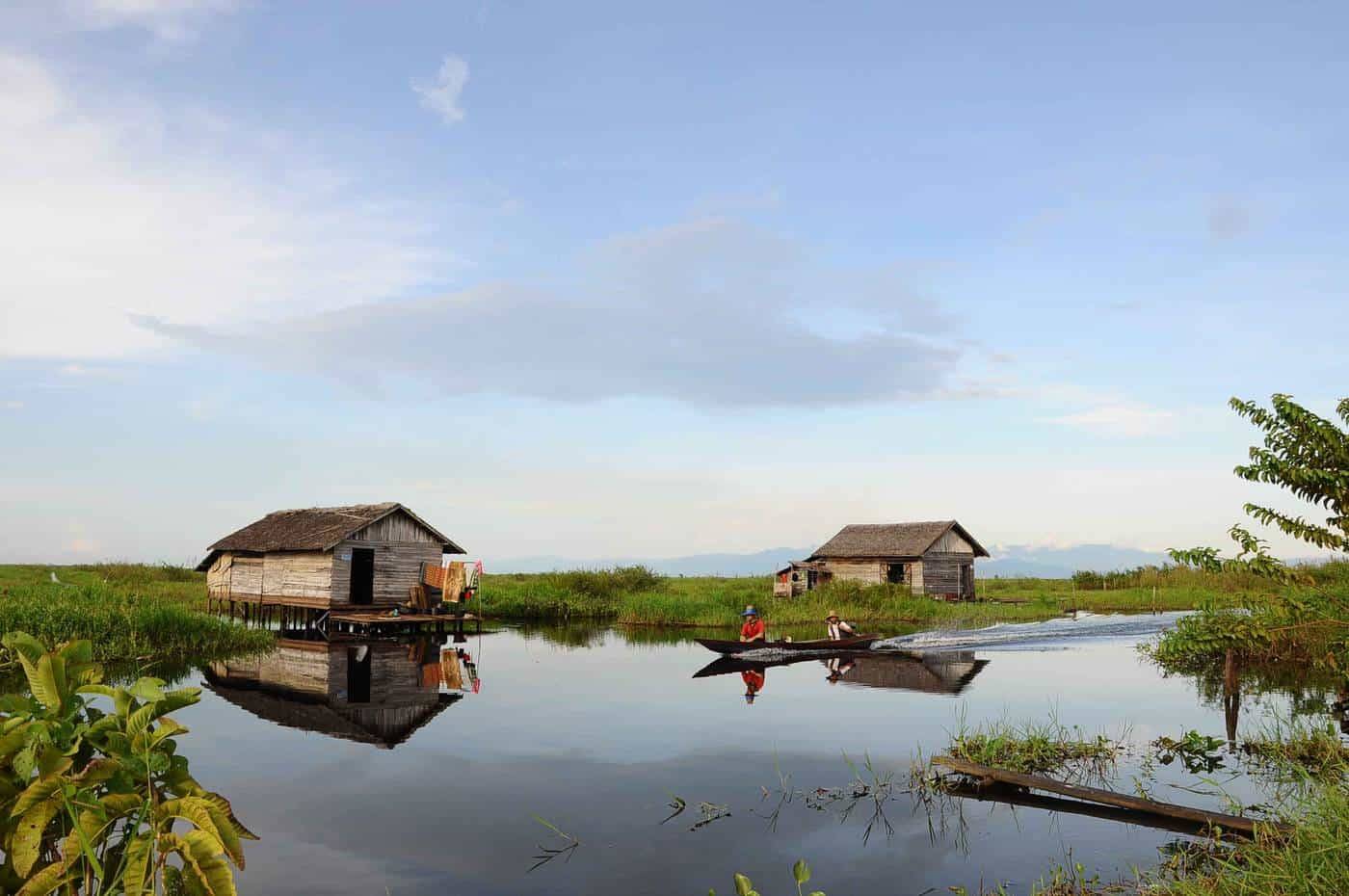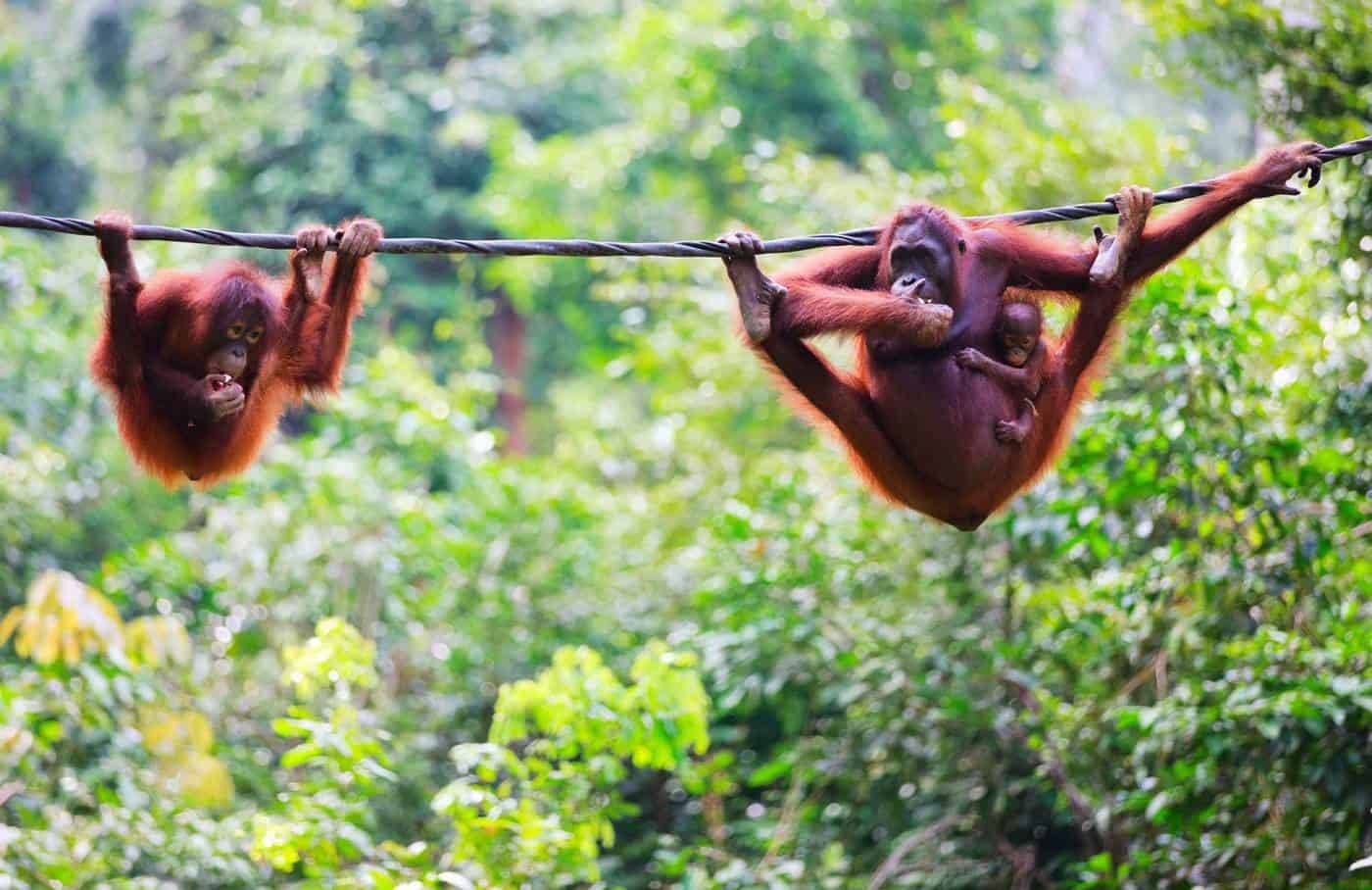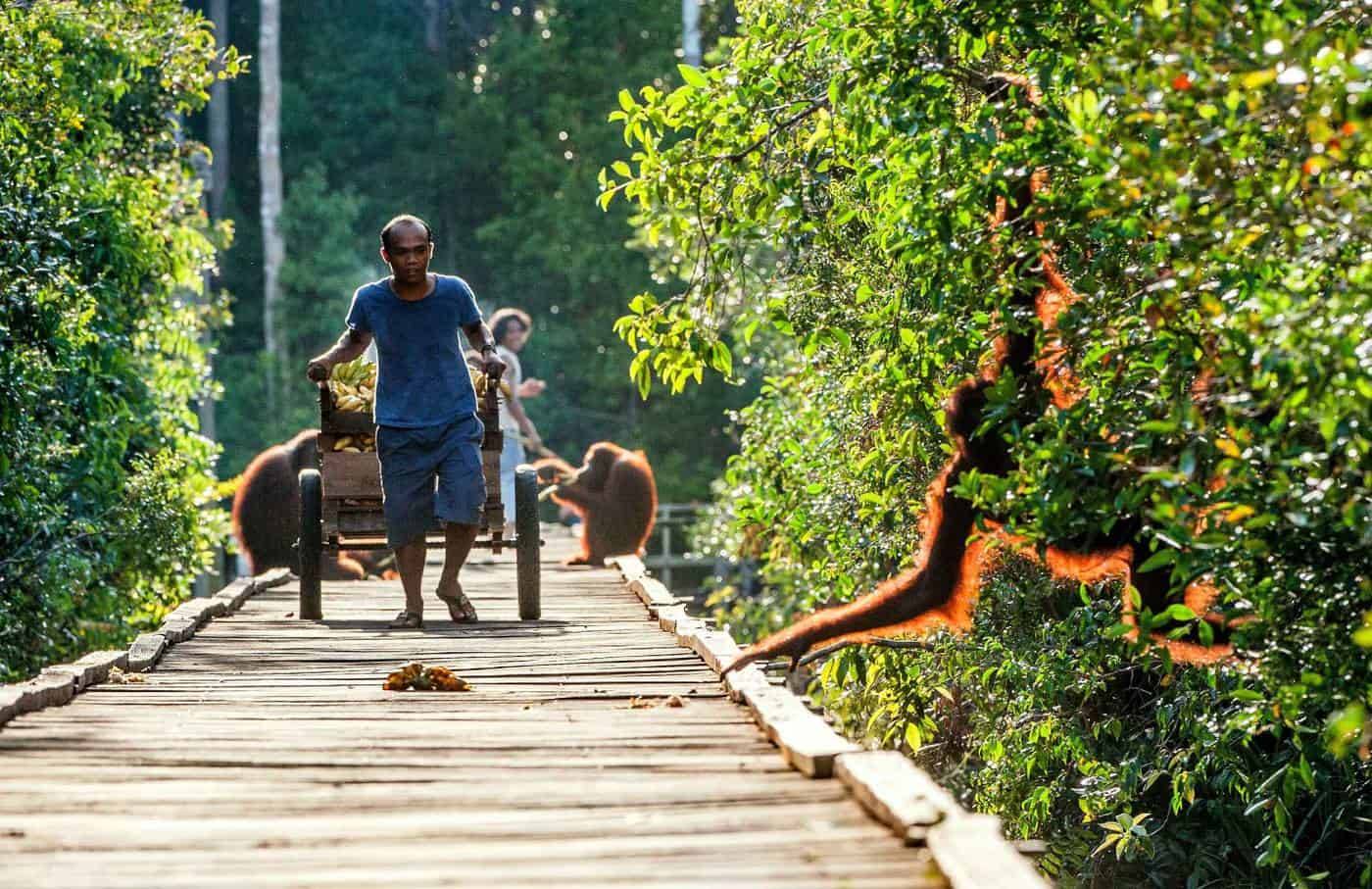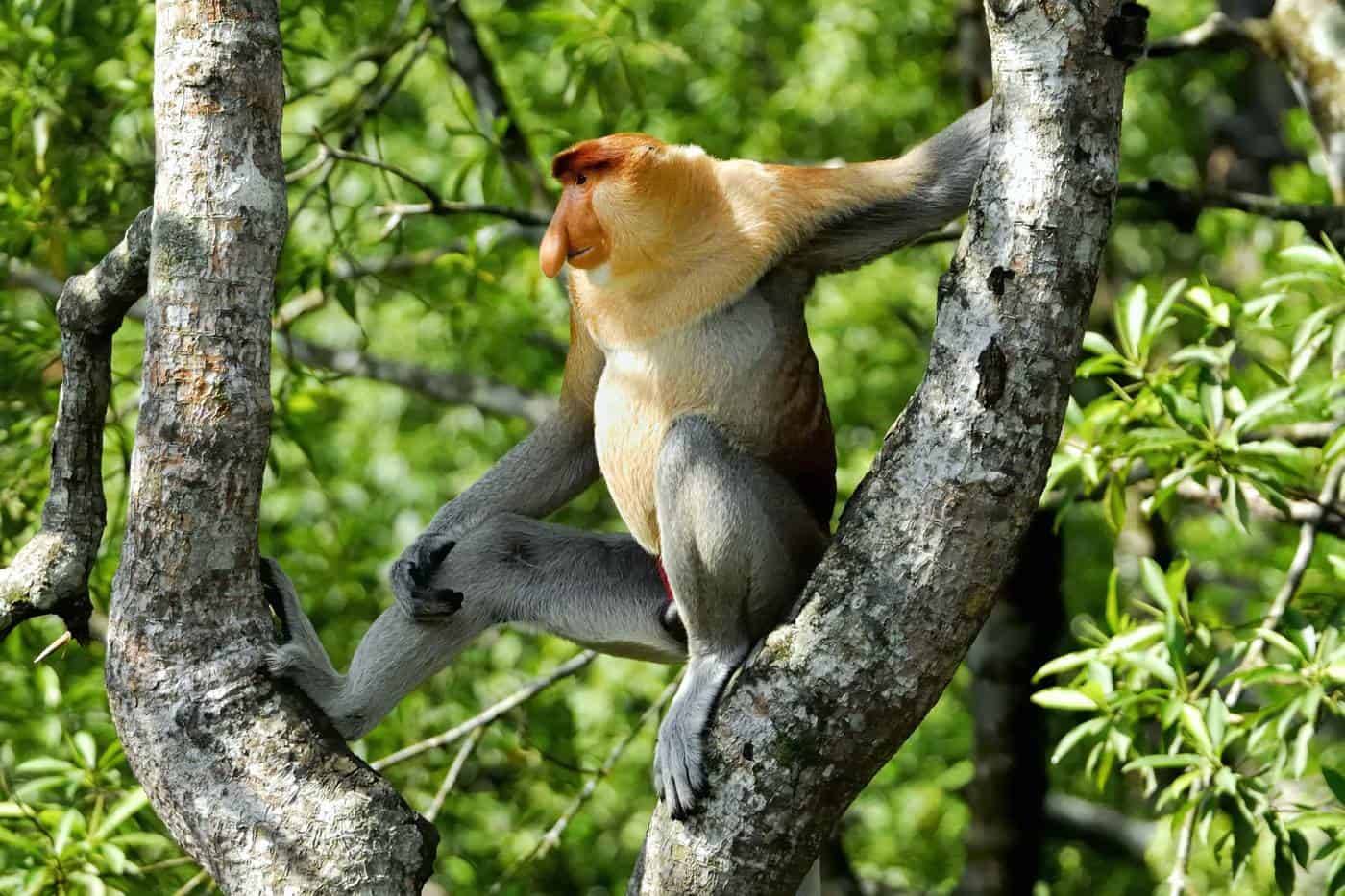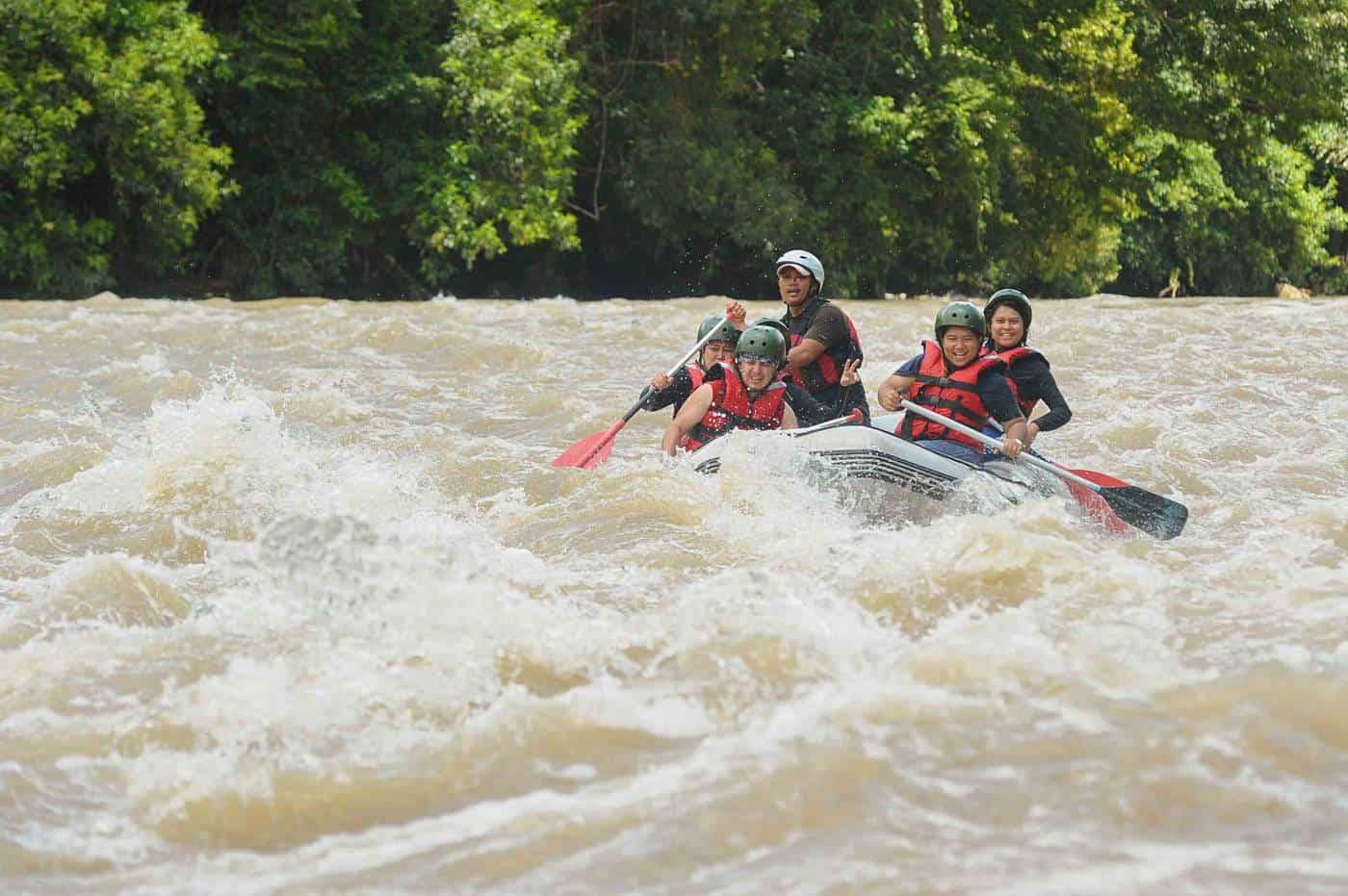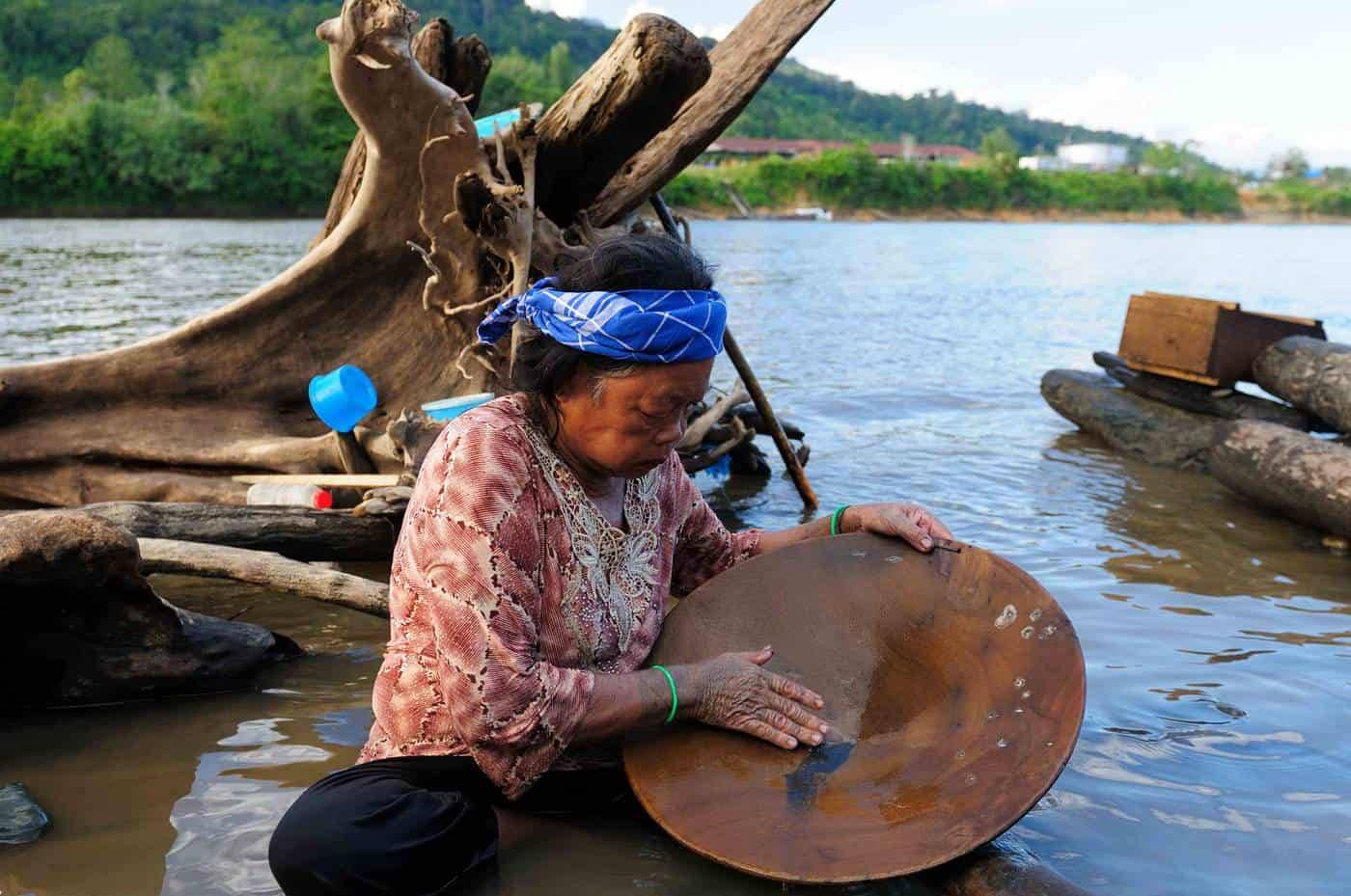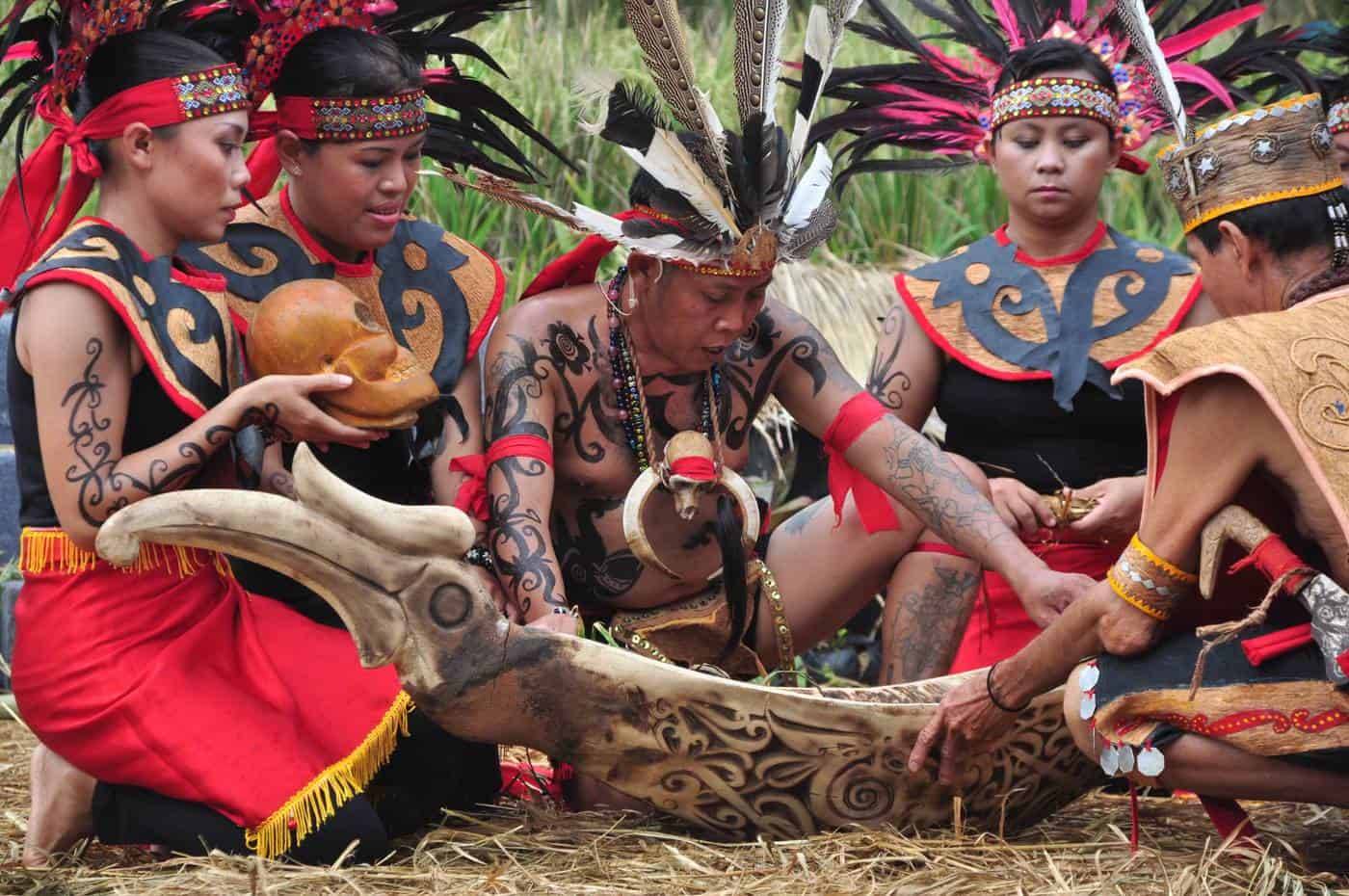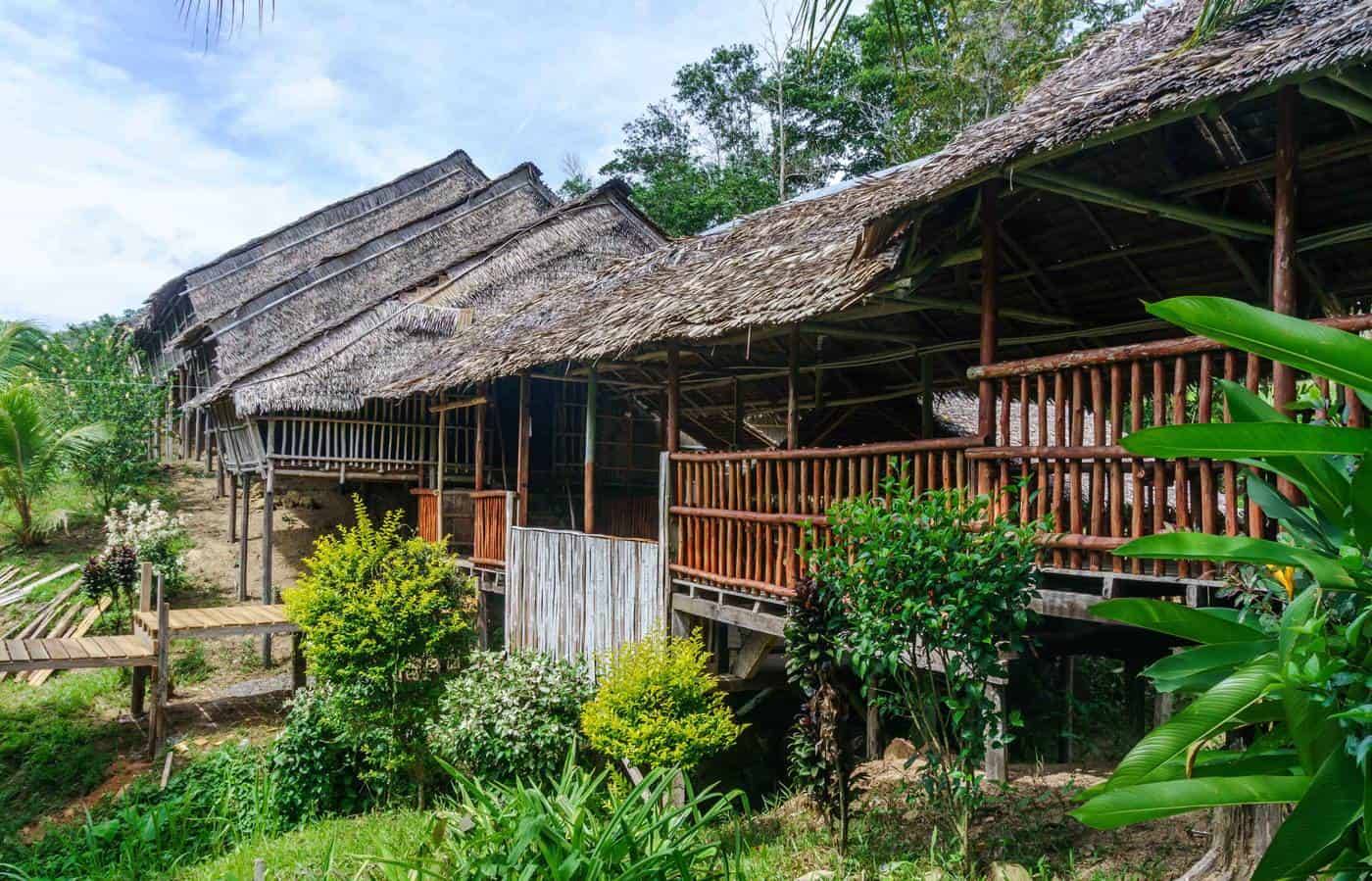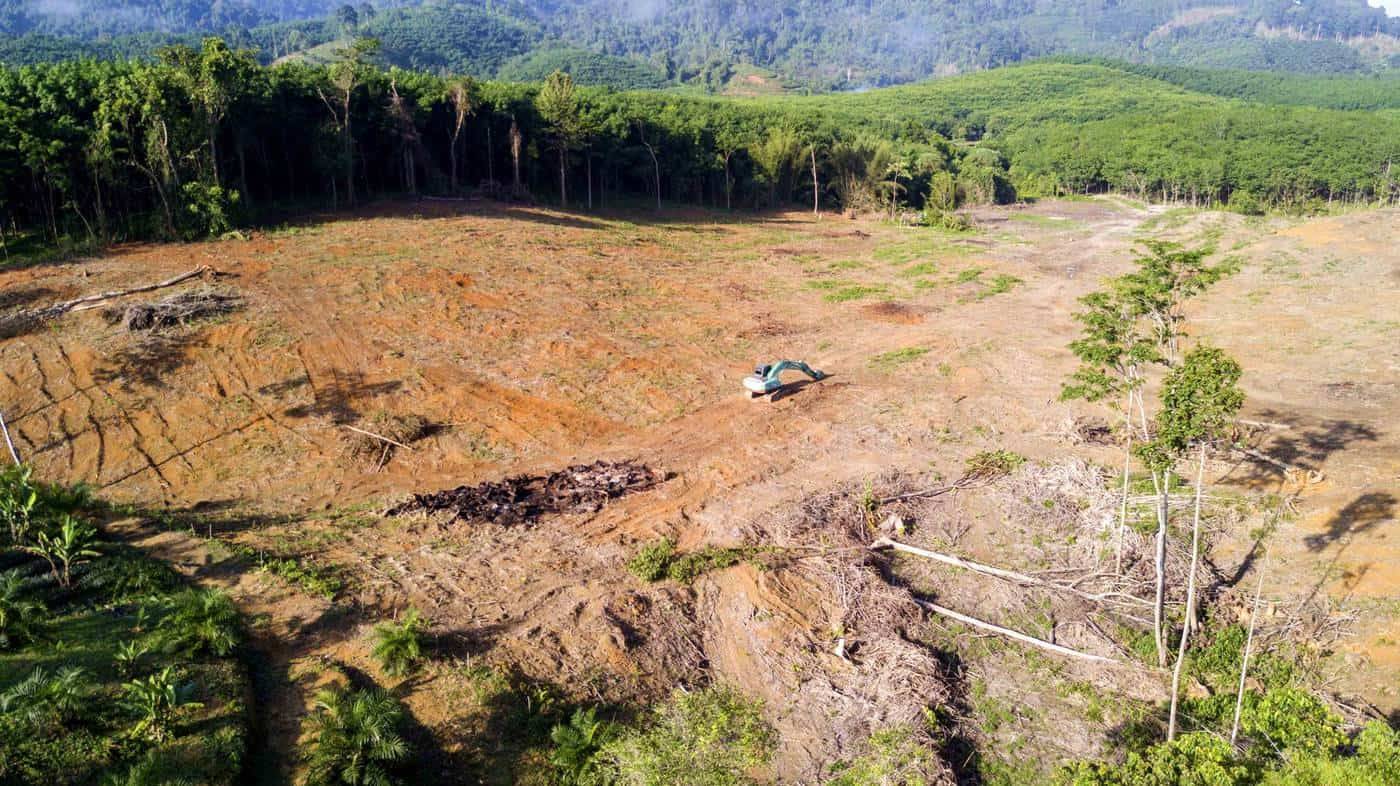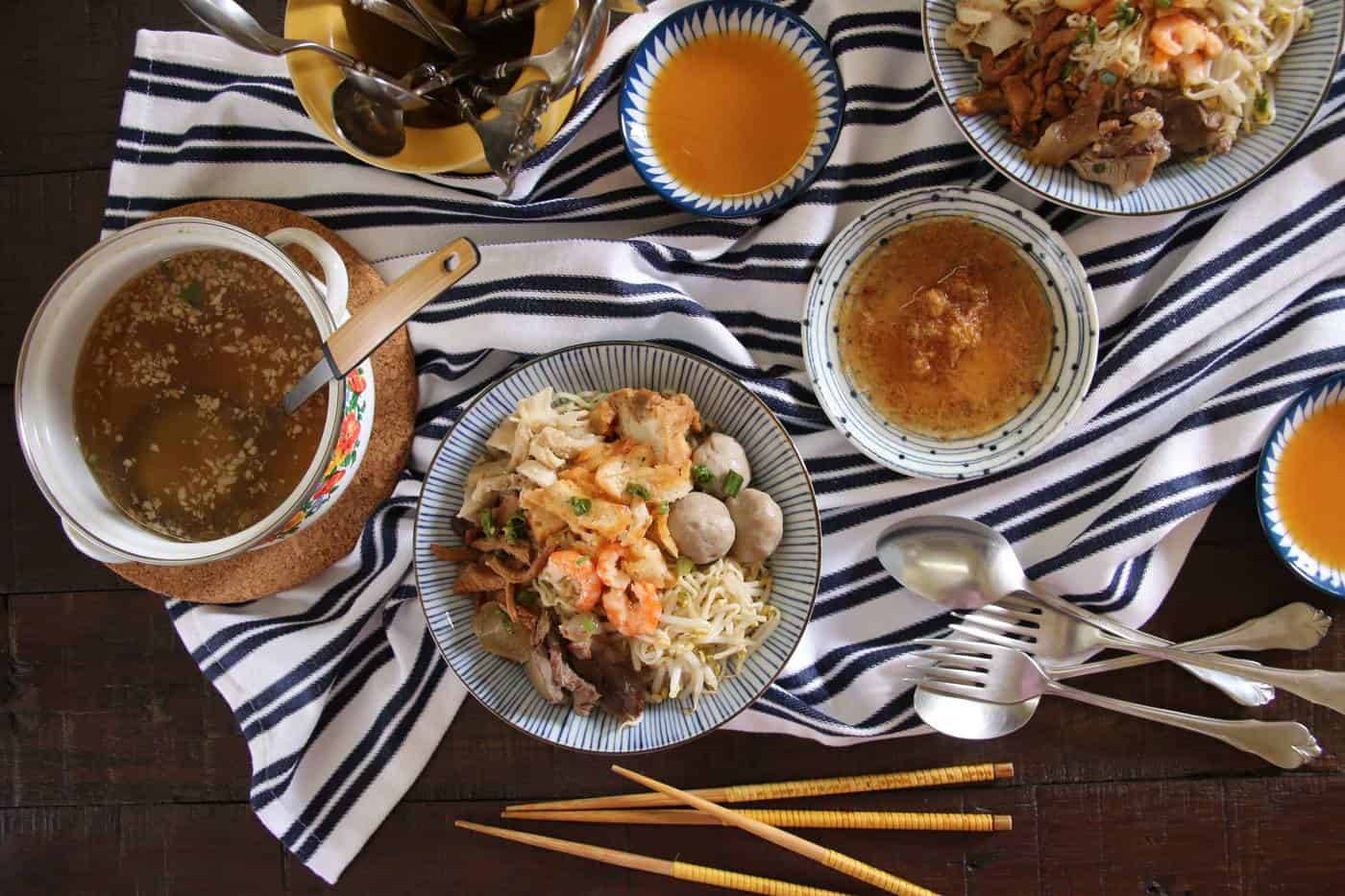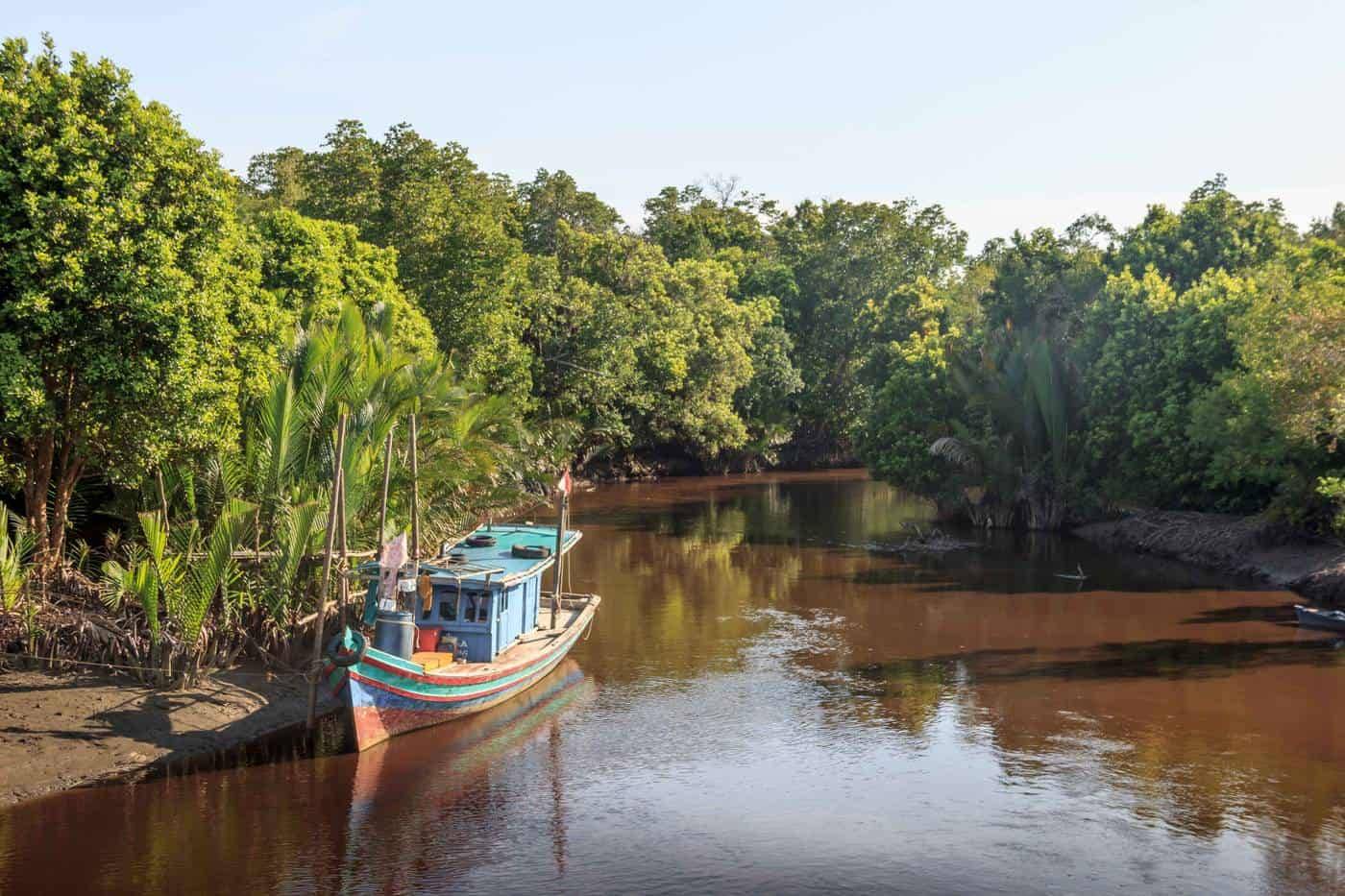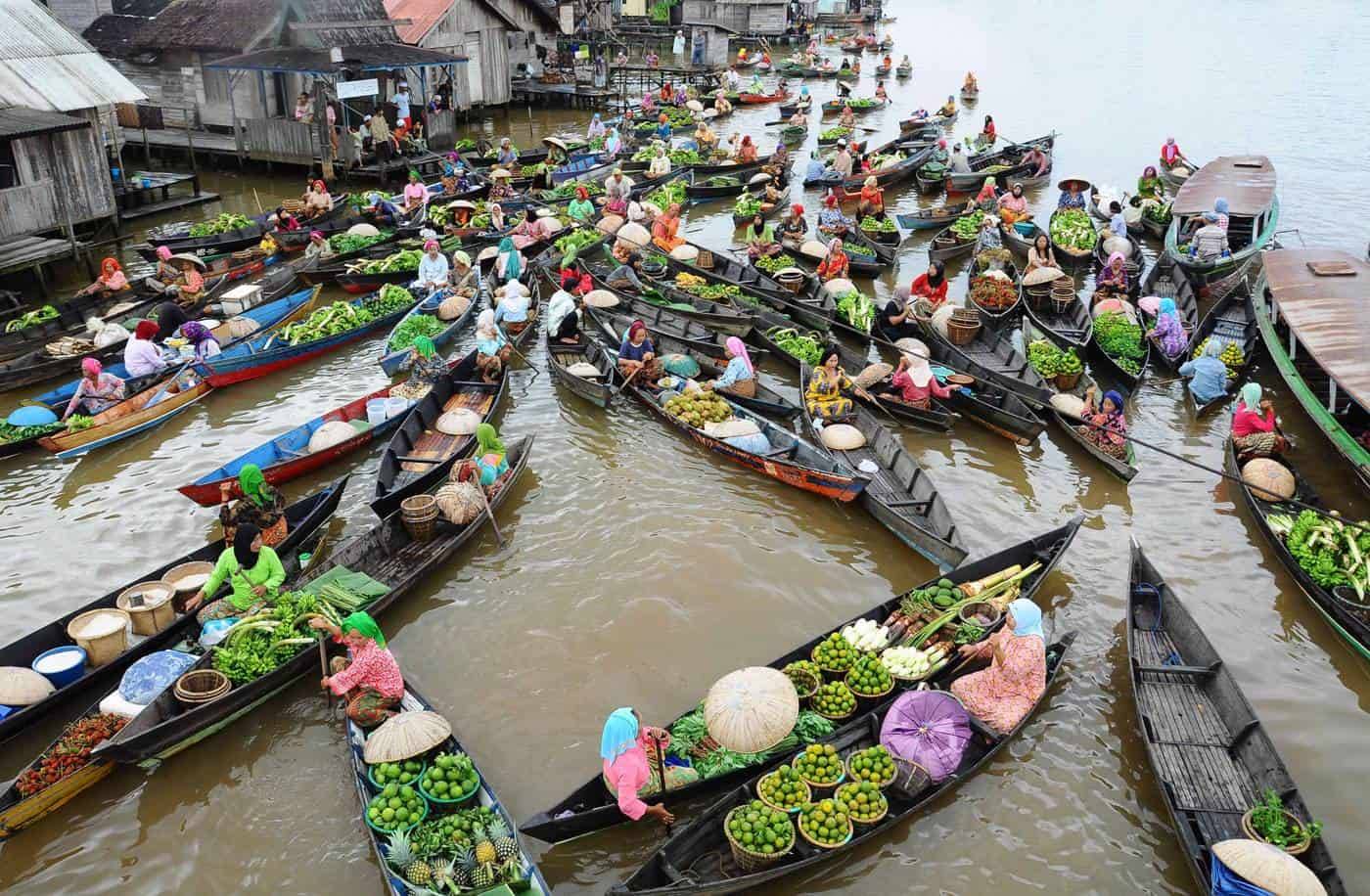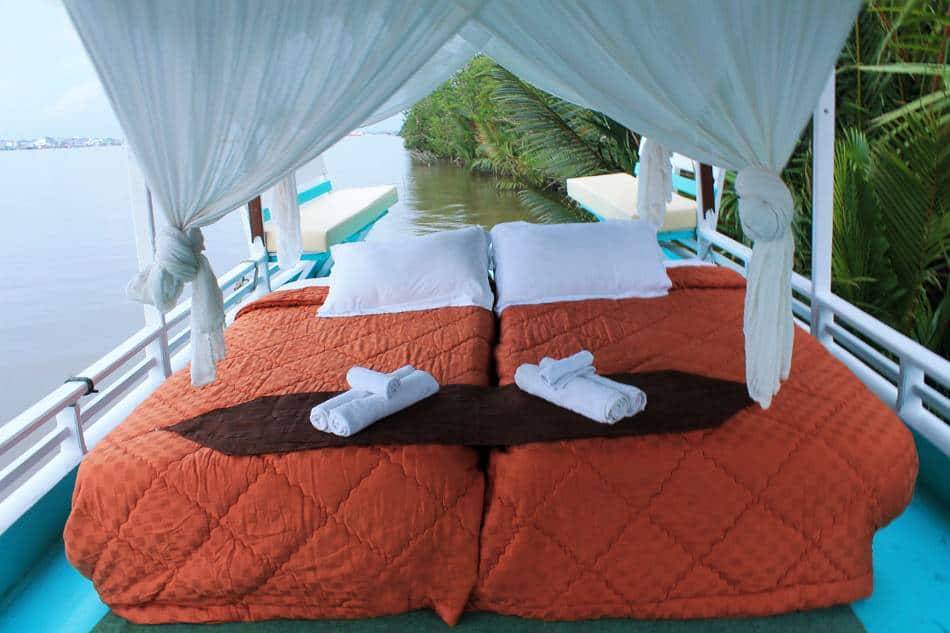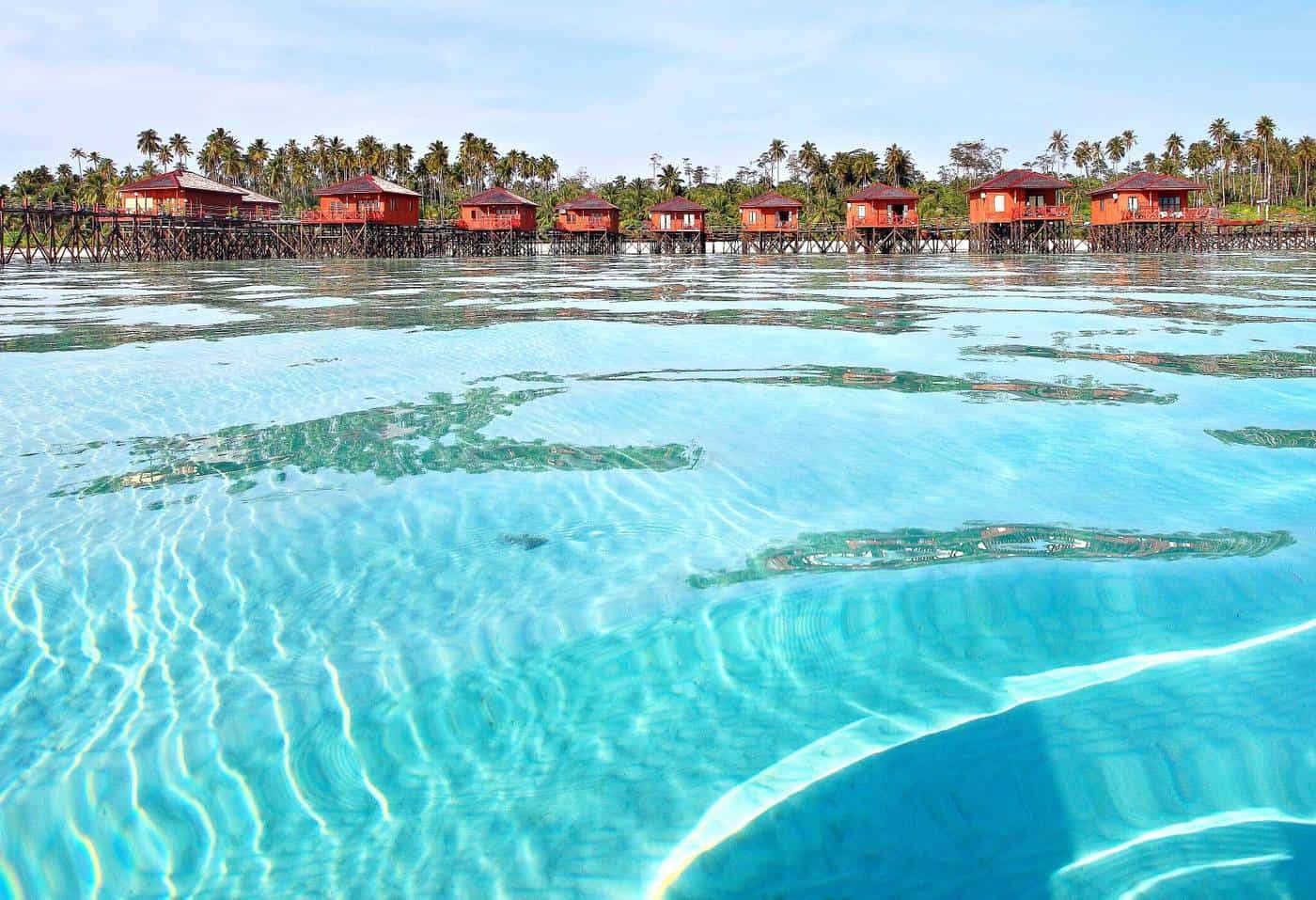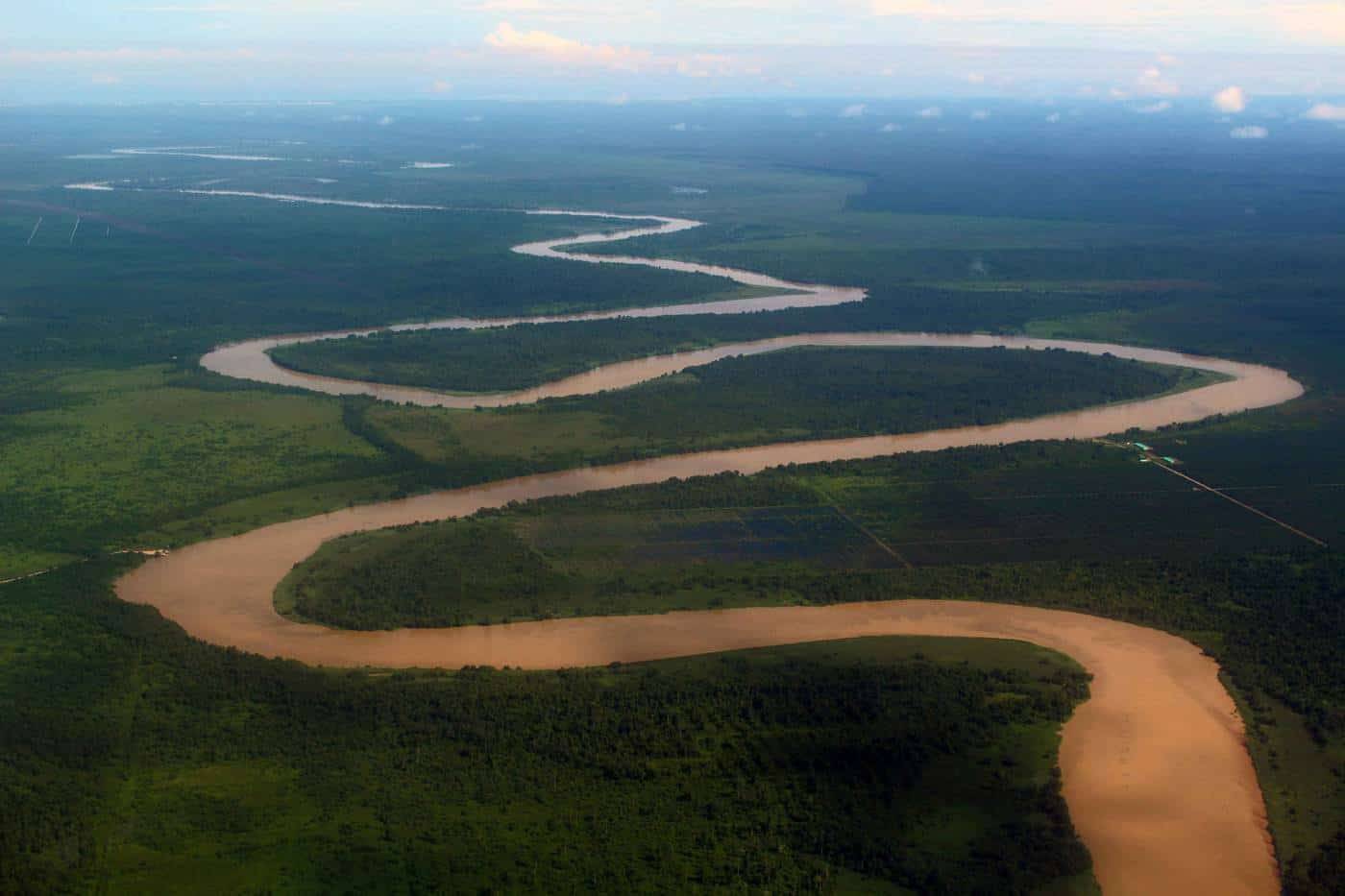
CENTRAL KALIMANTAN – ACROSS ONE THOUSAND RIVERS
PALANGKA RAYA
The provincial capital city, established in 1957 by the first Indonesian president Sukarno, spreads along the banks of two rivers – Kahayan and Sabangau, both meandering for several hundreds of kilometres to the swampy centre of Kalimantan.
The town itself is far from being a tourist hub, yet the countryside boasts points of interests. Besides, Palangka Raya is the base for all ventures in the region where most of the river tours, wildlife expeditions and permits to the national parks can be arranged.
WHAT TO DO IN PALANGKA RAYA
- Regional Museum of Palangka Raya – displays of Dayak art and crafts, miniature sandungs and patahu
- Rungan River/Pulau Kaja – orangutans at the Nyaru Menteng Rehabilitation Centre (accessible by taking a boat tour)
- Rungan Gold Mines – hire a private guide to take you to the old mines of Teweh and Batu Api
- Gohong Rawai – waterfalls & rapids (great rafting, jungle trekking)
- Tangkiling Hill – a short hike to the top of a hill that offers 360-degree panoramic views of the surrounding lowlands
- Bukit Rawi – a sacred burial place where the ashes of perished people (sandungs) are kept, lovely Dayak carvings, Dayak performances
- Bentangs – visit one of the typical longhouses of Central Kalimantan (bentags), e.g. Tumbang Gagu (built in 1870), Buntui or Malahui longhouses
- Kahayan River Tours – canoeing, kayaking, traditional timber rafting, extreme jungle trekking
SABANGAU NATIONAL PARK
Home to the largest orangutan population in our planet, sadly, the magnificent rainforest of Sabangau River has largely been damaged by illegal forestry. There are many places where the furry apes are no longer able to cross rivers to move freely from territory to territory, and their pathways got cut off.
On the other side of the national park, virgin forest along the Kahayan River has been home to orang-utans for centuries, too. However, gold mining, burning rainforests and agriculture that turned millions of hectares of peat swamp forest into rice fields (Mega Rice Project in 1997), caused severe damage to the area.
Extensive smoke from burning the peat forest generated a much sulphuric acid that heavily polluted rivers, having a massive impact not only on the ethnic minorities, wildlife, birdlife but also fish.
Today, there are numerous tour operators in Palangka Raya that can organize a tour to the Sabangau National Park (ask for information at your guesthouse).
TANJUNG PUTING NATIONAL PARK
The starting point to the famous Tanjung Puting is Kumai where all tours and cruises can be booked, and local guides can be hired. Tanjung Puting is regarded to be the easiest place on earth to spot orang-utans and proboscis monkeys in their natural environment.
Tanjung Puting coastal swamps and mangroves were turned into a national park in 1982. The tropical rainforest is home to diverse fauna and flora, such as 9 species of primates, clouded leopard, sun bear, barking deer, sambar deer, crocodiles and more than 200 different species of birds, including the rare hornbills.
The vast wetland has such diverse fauna, and lush flora that is was given an epithet ‘Garden of Eden’.
CAMP LEAKEY
Camp Leakey is an active research facility (since 1971) and a rehabilitation centre that studies orangutans that have been hurt or orphaned. The centre helps the apes to recover in their ‘natural habitat’ so they can be released back into the wild. Orangutans get regularly fed to attract more tourists and often stay at the centre for good as they are not able to adapt to the wild jungle life.
There has always been much controversy and question whether this kind of projects is really beneficial or rather harmful.
ESSENTIAL EXPERIENCES IN TANJUNG PUTING NATIONAL PARK
- Camp Leakey – a tourist highlight of Kalimantan, the camp is a must-visit unless you are against eco-tourism. You can watch the big primates from several viewing platforms/feeding stations while playing, getting fed and swinging in the trees. There are big males and babies, often interacting with the rangers and it is quite a spectacle to watch them having fun
- Overnight klotok cruise – traditional klotok boats are used to get closer to the fringe of the rainforest and watch the apes swinging in trees, the tours typically include jungle trekking, stopping at an orangutan camp and a Dayak village. NOTE there are 2 days/1 nigh or 3 days/2 nights cruises along the Sekonyer River, and this is not going to be a cheap trip (count on 200-300 USD per person)
- Watch the related movie IMAX ‘Born to be Wild’ (Morgan Freeman) before you travel 😉
DID YOU KNOW?
As if there were not enough matters causing controversy in Central Kalimantan, Kumai is the major producer of the bird’s nest soup for the Chinese market. Birds nest (Esculent Swallow) is one of the most valuable and most expensive animal products on Earth. Whereas for us a rarity, for the Chinese it is a delicacy that promotes health and beauty. The Chinese are willing to pay up to 2500 USD for a kilo of these precious nests.
MUARA TEWEH (BARITO RIVER TOURS)
Barito River meanders from the heart of Borneo, 900 kilometres through entire Central Kalimantan, to join the Java Sea at Kualakapuas and Banjarmasin. The river can be travelled upstream from either of the towns by booking a boat tour to Muara Teweh.
There are several interesting towns and Dayak villages to stop by on the way as well as plenty of natural attractions to enjoy albeit this is one of the Borneo`s least trodden paths (perfect for adventure seekers).
NOTE Muara Teweh can also be reached via road from Samarinda – however, it is not a very common trip.
In South Barito, the lush forest of Buntok provides shelter for colourful birdlife, various monkey species and reptiles, and the local caves, rivers and waterfalls offer ideal conditions for outdoor activities.
Further north, Muara Teweh is one of the remotest towns in Kalimantan, yet surprisingly large and busy. While the town might not be extraordinarily charming, there are many natural and cultural attractions around.
The northernmost Barito territories (past Puruk Cahu) are defined by stunning scenery and adrenaline activities; e.g. Teluk Jolo and Tumbung Juloi are known for river rafting, kayaking and jungle trekking.
ESSENTIAL EXPERIENCES ALONG THE BARITO RIVER
- Buntok – Lake Melawen (ideal for wildlife watching, fishing)
- Tamiang Layang – Liang Sarangih is anan ancient limestone cave with numerous tunnels
- Muara Teweh – Makonjun Longhouse is an old Dayak betang in the Makonjun village (2 hrs by motorboat from Muara Teweh)
- Puruk Cahu – historical forts, longhouses, wildlife and jungle trekking tours (Poran and Koloubesar waterfalls), Labung & Masuparia villages (diamond & gold panning), black orchid park and wildlife reserve
- Teluk Jolo & Tumbung Juloi – canoeing, kayaking, traditional bamboo rafting, jungle trekking and eco-tourism (outlying Dayak communities can be visited)
THE DAYAK TRIBES
The aboriginal hill-tribes of Dayak are one of the major reasons to visit Borneo. More than 200 of these native ethnic subgroups occupy the interior parts of the island, living in isolation and still today cultivating animism.
Once notorious warriors, known as ‘The Headhunters’ but also some of the world`s oldest ‘Tattoo Artists’, today these friendly communities happily greet the ‘rich’ Westerners within their jungle-territories, and anyone who brings some gain is welcome to stay at their famous longhouses and watch cultural performances.
There are still genuine Dayak communities that dwell deep at the heart of Borneo albeit most of the villages available to visit are living museums and quite sadly sort of ‘human zoos’.
THE DILEMMA OF ECO-TOURISM
National parks of Kalimantan have often been an object of discussion due to the past logging and still present illegal forestry. Borneo was gifted with some of the most biologically diverse habitats on Earth and also the world`s oldest rainforest. The extensive deforestation, caused by rapid industrialisation, started in the 1960s.
Since then, Borneo has undergone a dramatic transformation, and even though there were several attempts to stop these activities, illegal logging is still a big topic.
Naturally, the fast-growing tourism, especially the eco-tourism industry, does not help to prevent this from happening. Tourism not only indirectly encourages the deforestation (building new facilities, providing tours into the previously untouched areas) but also contributes to disappearing of the indigenous Dayak culture and their traditions, and it ultimately affects the future of orang-utans and other endangered species.
Therefore, every visitor is strongly advised to do some research and re-consider the concept of eco-tourism prior to travelling.
USEFUL TRAVEL TIPS
Religion – Borneo is predominantly a Muslim enclave, and conservative dress is expected at all times, especially women. Many female travellers reported situations when they felt extremely uncomfortable in some places. Besides, when travelling to the indigenous regions and Dayak villages every visitor should make themselves familiar with the local customs and follow the etiquette.
Health – There is a high risk of Malaria in Kalimantan, particularly during the rainy season (Dec-Feb). Vaccinations such as Hepatitis A, B and Tetanus are recommended. In some cases, the Yellow Fever Immunisation is required (check with your national health policies).
Transport – The only way how to get around Kalimantan is using public buses and boats (unless booking a private tour). However, this can sometimes be a gruelling experience – distances are huge, the roads tortuous and the driving hair-raising. On the other hand, it is part of the Bornean travel adventure.
Food – Kalimantan is strongly influenced by both the Chinese and Malay cuisines, hence noodles, soups and satays are popular dishes at all warungs. Chicken, fish, eggs and rice can be found on the everyday menu at most of the families and durian is the favourite fruit. Remember that the Indonesians like it hot & spicy!
Alcohol is fairly limited in Borneo
KLOTOK BOATS
Most of the river tours use the local klotok boats, specially designed navigators that can move efficiently in the narrow and often shallow rivers. Since they can access some of the least accessible places in the jungles and swamps, they started to be used in tourism as the major transport – an ideal way to spot wildlife from a very close distance.
TRAVELLING IN KALIMANTAN
Kalimantan is not a cheap place to travel at all. The locals know the value of their land and the Westerners too persistent in seeking for exciting jungle ventures. Hence that reflects in prices and also in the type of travelling here – most of the time visitors will need some help of the local guides or tour agencies.
Independent travellers who look for an ‘out of comfort zone’ trip will surely find their needs satisfied as it is quite a mission to explore the wilderness of Borneo on your own and it requires patience, good planning and lots of time.
NOTE To enter any national park and protected area in Kalimantan you will need to purchase a permit at one of the local tourist offices.

It can be challenging to move around Kalimantan, boats are the main means of transport even in big towns and cities
WHEN TO TRAVEL
The Indonesian Borneo (Kalimantan) is generally recommended to visit between June and October, during the dry season.
Especially, wildlife spotting and eco-tourism are dependent on good weather. In fact, many reserves and protected areas are only accessible outside of the rainy season.
HOW TO GET HERE
Fly to Palangka Raya/Tjilik Riwut Airport (daily flights from Java & Bali)
To Sabangau National Park: arrange a tour in Palangka Raya
To Tanjung Puting National Park/Camp Leakey: fly directly to the Pangkalan Bun Airport (regional flights also available from Pontianak and Banjarmasin). Otherwise, book a boat tour in Kumai
To Muara Teweh: by road from Samarinda (one day journey) or Palangka Raya (13 hrs trip drive or a multi-day boat tour). Alternatively, use Beringinn Airport in Muara Teweh for a domestic flight.
For all domestic flights check out the Indonesian flight companies Wings Air, Susi Air, Kartika Airlines, Lion Air, Silk Air, Sriwijaya Air and Garuda Indonesia
For all international flights go to www.momondo.com or www.skyscanner.com
